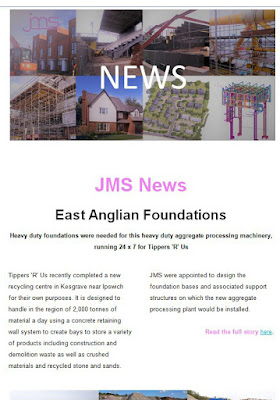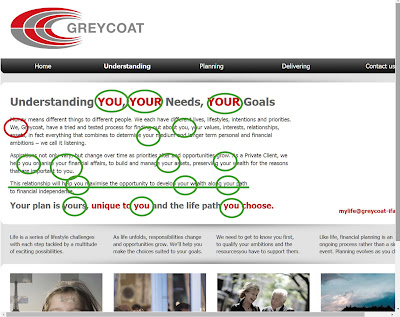“ I think we should, but I don’t have time…”
As
part of a corporate CRM, the blog is a great way to keep the sales
communications plate spinning at the simple push of the return key.
Remember
the days of the Newsletter when we used to fell and pulp forests to
print and post interesting collections of headline-driven words and
illustrated articles to remind clients and prospects of the breadth of
service genres we had to offer ? Well, now we blog it.
I
don’t need to tell you how many stamps, trees and envelopes you save
and how many dustbins now avoid the thud of the wasted mailing. But,
perhaps I do have to tell you how the blog helps drive your CRM and how little of your time (practically none in fact) is required to make it happen.
Words, style, frequency, contents
– leave all that to ASPIRUS Words.
– leave all that to ASPIRUS Words.
By way of an example, let me show you how it works with JMS Engineers.
They engineer solutions for Civil and Structural developments. Their projects are many and varied, each presenting several highly technical problems to be resolved, cost- efficiently and managed. Their 40 staff operate out of seven offices in Britain and Greece, they barely have time to brief me, yet alone write the blog themselves.
They engineer solutions for Civil and Structural developments. Their projects are many and varied, each presenting several highly technical problems to be resolved, cost- efficiently and managed. Their 40 staff operate out of seven offices in Britain and Greece, they barely have time to brief me, yet alone write the blog themselves.
So we research it, write it, visualise it, publish it and publicise its publication through a proactive strategy of E-CRM.
We embed technical solutions
 within corporate personality
within corporate personalityFrom half a dozen bullet points detailing the hurdles particular to the project to be covered in the blog, we research and write the appropriate technical contributions, check it with JMS, then write it in a style developed to reflect the ethos and character of the company.
The CRM is an internal communication to their 40 staff. They then share the story with their own connections - LinkedIn, Twitter and Facebook (if the latter is a corporate site).
Head office does the same for their corporate followers, networking the message instantly.
Incredibly, even though the initial mailing is to just 40 staff (and not all of them open it!), the page hits on the newsletter / blog are far far higher that could be expected.
To see their blog, click the image (right) or here.
What JMS gain:
- Strongly branded regular communications.
- Regular illustrated case studies.
- Pragmatic examples of application, problems and solutions.
- A growing archive of brand / product examples they use to illustrate solution possibilities.
- Regular soft-sell communications with clients and prospects.
...you really do not need to use your own time to gain the benefits.
Add real life to your own CRM -













